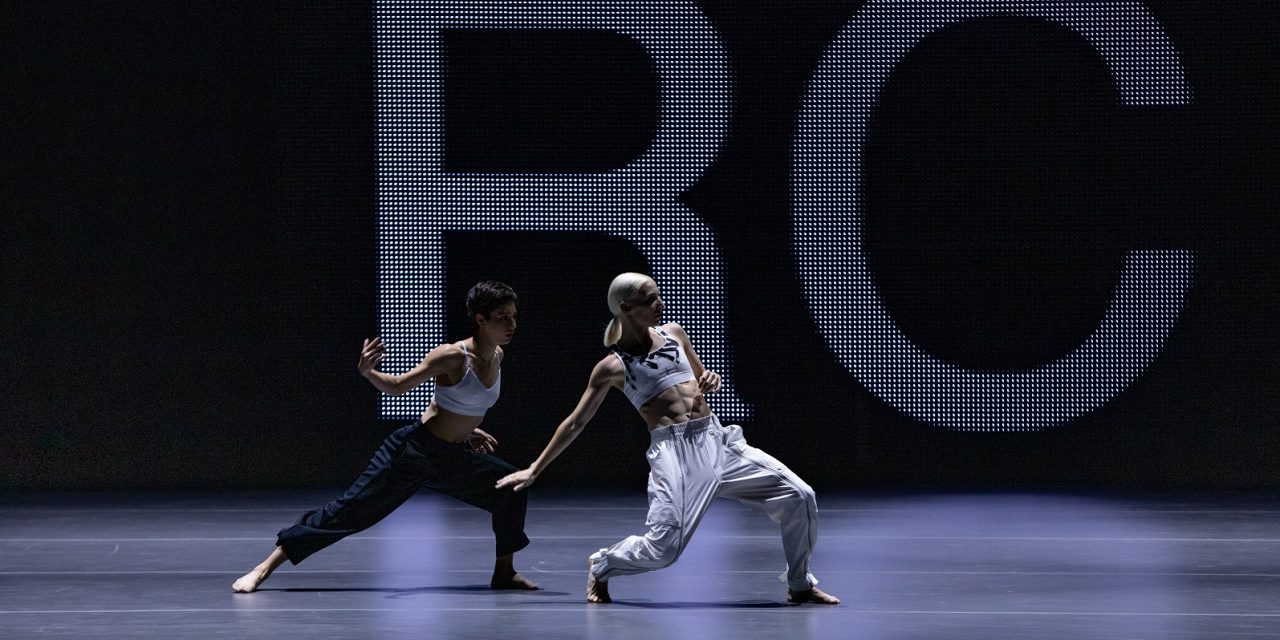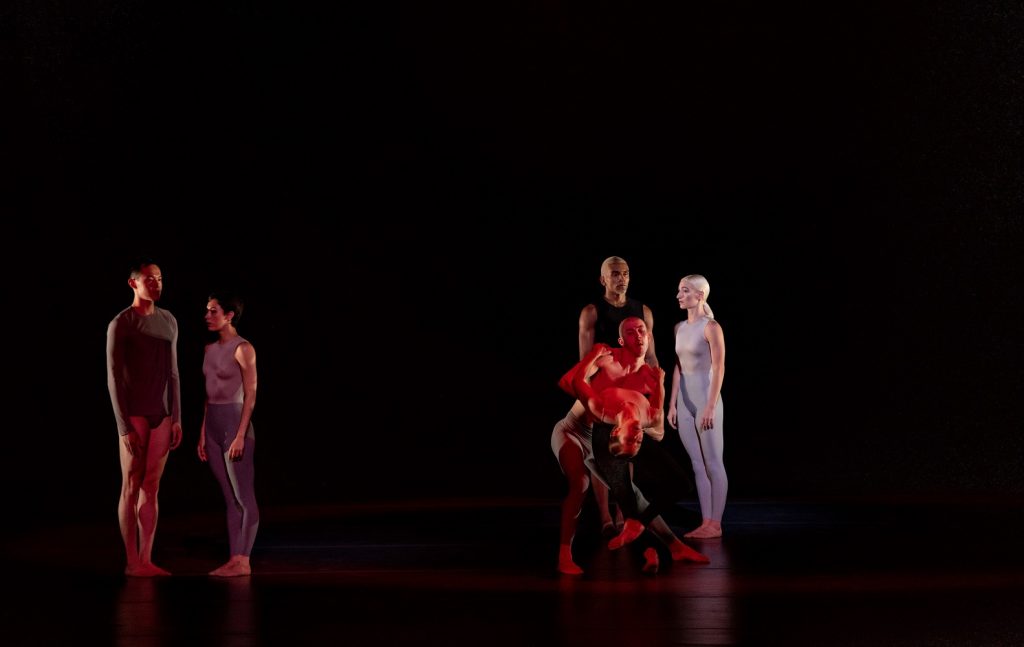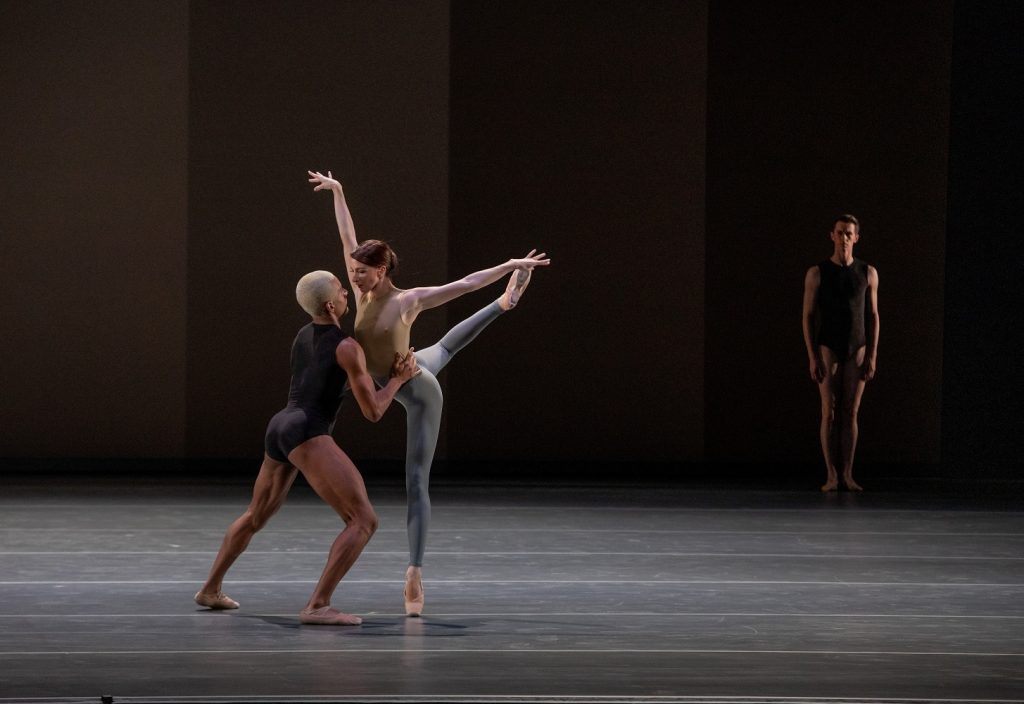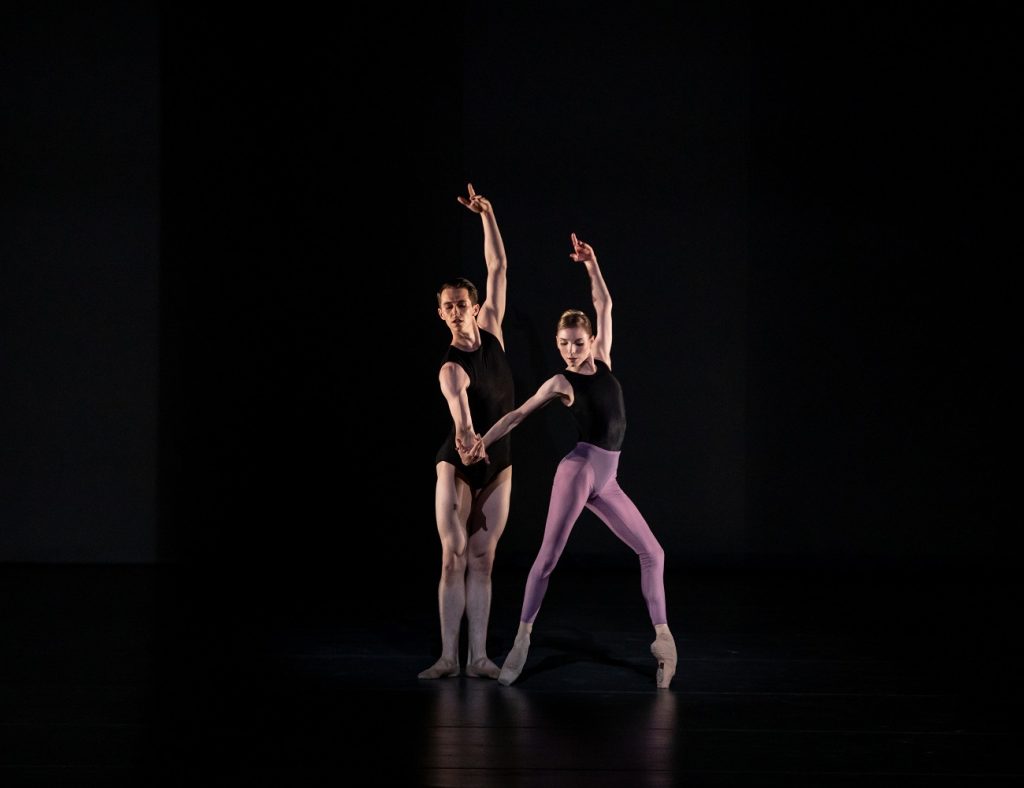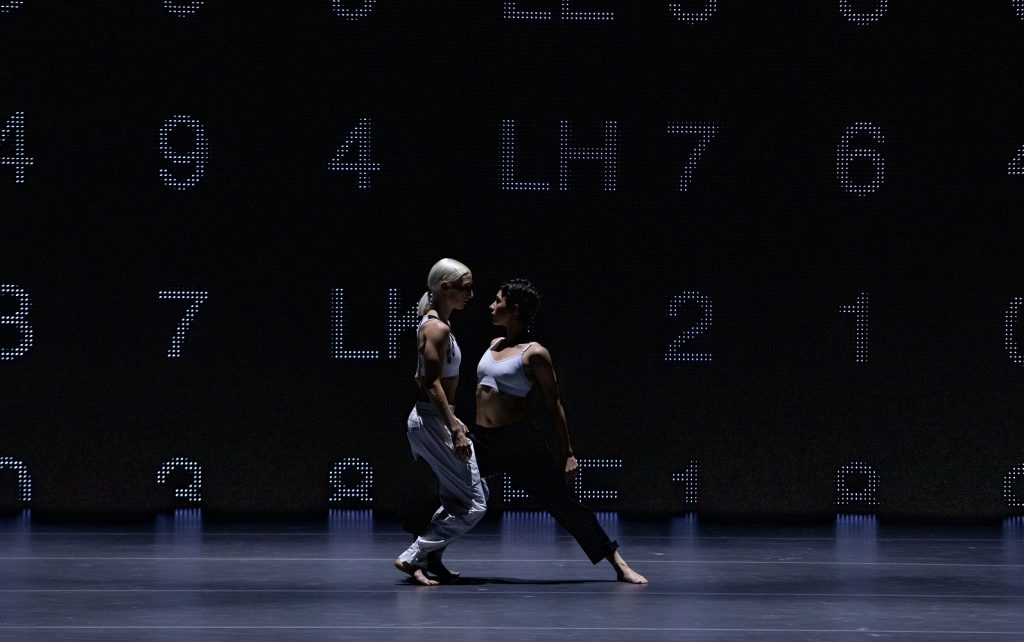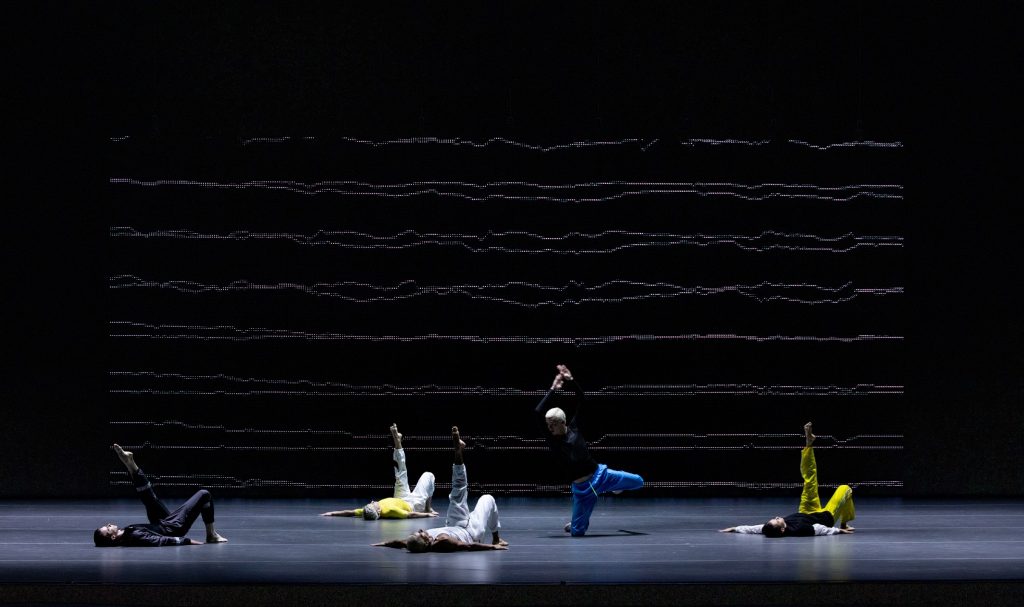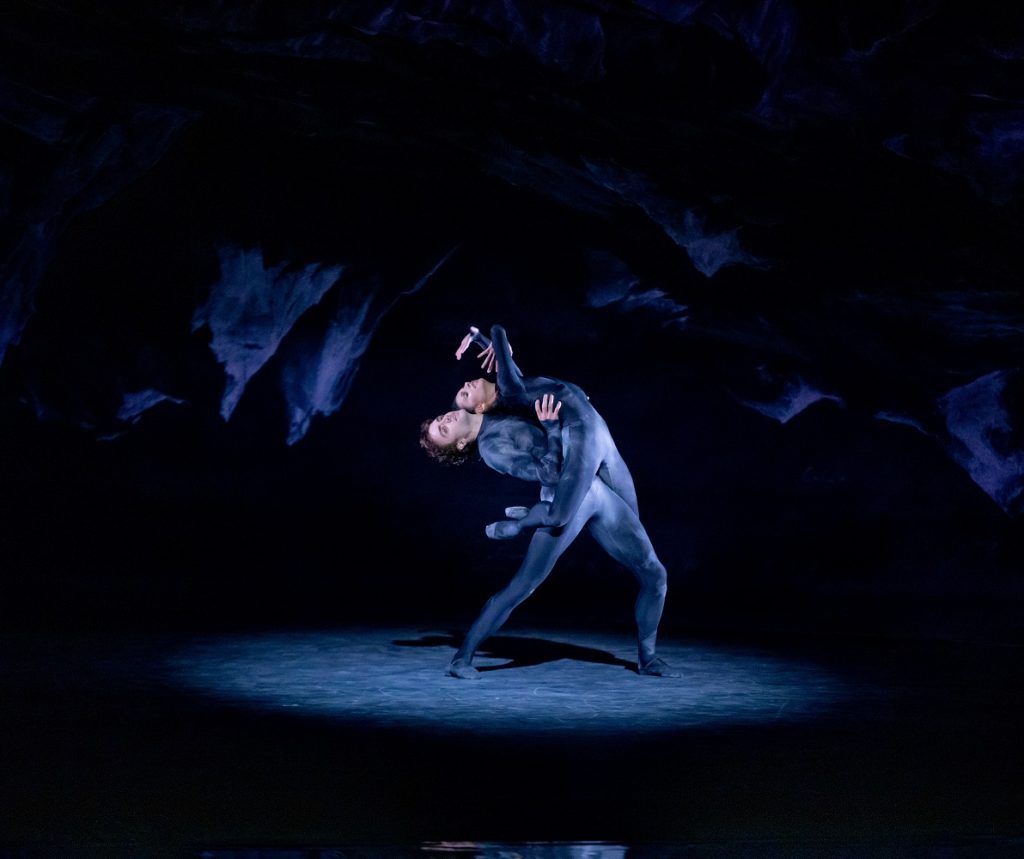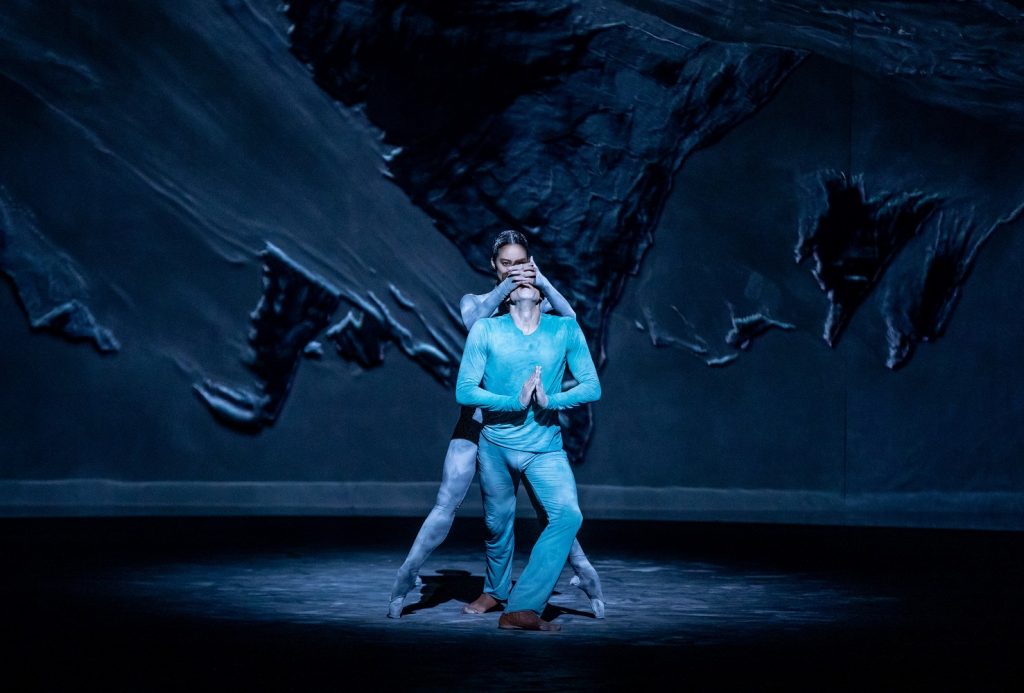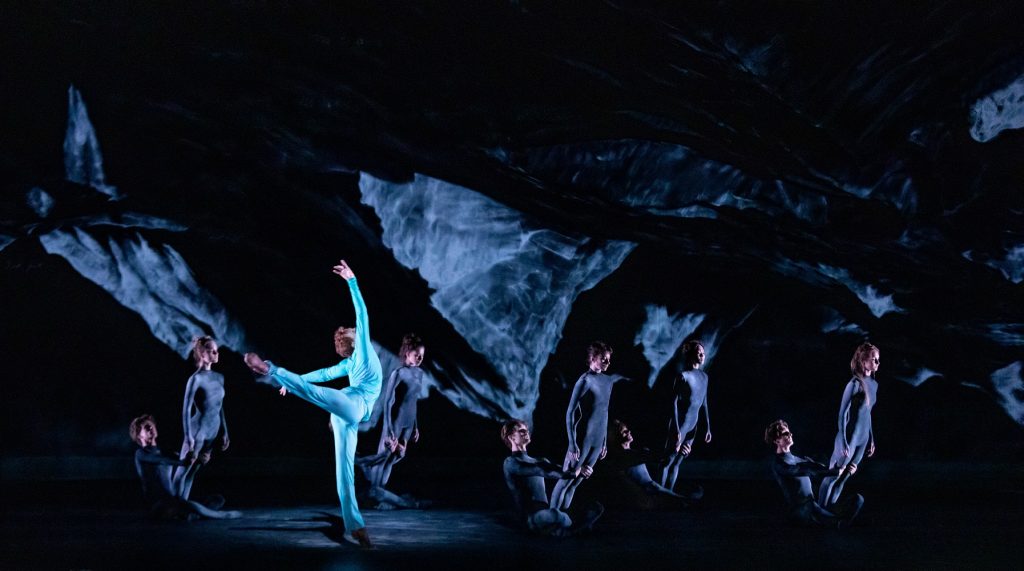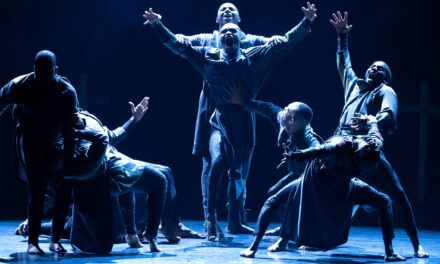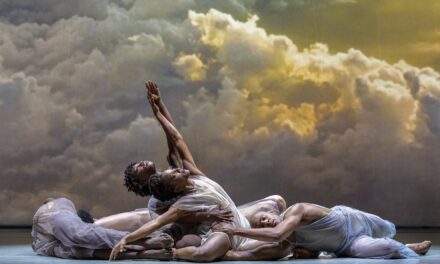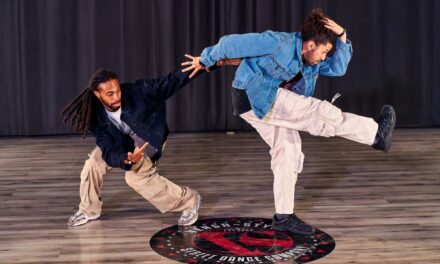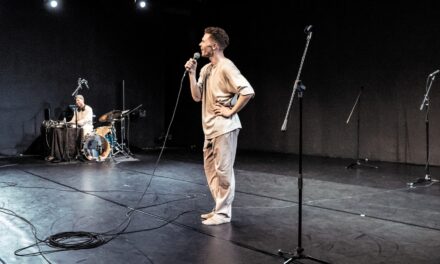Anticipation was in the air Friday night at the Dorothy Chandler Pavilion as the audience awaited the premier of new works by internationally recognized trailblazers of innovation and creativity, choreographer Wayne McGregor and composer Thomas Adés. The well-heeled audience was abuzz with excitement, many already fans of the duo. Wild dissonant sounds of the orchestra warming up in the pit added to the atmosphere. To the right of the audience a full tympani set up looked ready for action. This was a night brought to life through an exclusive co-presentation by Glorya Kaufman Presents Dance at The Music Center and the Los Angeles Philharmonic.
With a rousing welcome for composer, conductor Thomas Adés so began the West Coast Premier of the 2010 ballet “Outlier.” Influenced by the Bauhaus art period and minimalist artists such as Josef Albers and Barnett Newman, McGregor set his ballet against an abstract backdrop of large concentric red circles. Five dancers are revealed onstage and began immediately dancing to the chaotic Adés composition. All the dancers are part of Company Wayne McGregor and or members of The Royal Ballet and each one was technically impeccable and a joy to watch.
The ballet broke down into several loosely tied sections. The discordant and tumultuous opening dictated more aggressive choreography led by the charismatic Jacob O’Connell. Dressed in white O’Connell stood out against the grays and beiges of the minimalist costumes of basic dancewear created by an uninspired Moritz Junge. This first section though buoyed by magnificent well rehearsed dancing became repetitive until the music took a turn to a softer more melodic feel. This allowed O’Connell a moment to be more reflective as he partnered with Maria Daniela Gonzales in a lovely adagio.
Choreography for a sextet followed with beautiful dancing and imaginative staging, aspects of relationships seemed to be the theme here. Whether breaking apart or going round in circles the choreography brought them together again.
A new segment was brought in with a bang as the music changes course and the backdrop became a series of gray lines reminiscent of a TV screen that’s lost its signal. Dissonant and jarring music were accompanied by hard-edged choreography. Though brilliantly executed the impact of this change was once again lost through repetition. Relief came with a change of music and the appearance of a yellow panel on the gray screen. The most melodic of all previous sections this brought in a gorgeous pas de duex danced by Joshua Barwick and Sarah Lamb.
The mood and the set continued to lighten as we came to the final segment. By now a white circle had appeared on the floor as if the negative to the original red circle that opened the ballet although, the point of this was questionable. The choreography and the music were freer and more fun here. When all nine dancers joined in you could feel the energy of their hard work but the joy seemed elusive. There was an aimless feel here as though McGregor had lost his focus. The audience however, rewarded these deserving dancers with rousing applause.
The dance world premiere of “Living Archive: An AI Performance Experiment” was the second offering of the evening. Wayne McGregor collaborated with Google Arts and Culture Lab to choreograph this piece based on artificial intelligence. The idea was that AI can “suggest movements based on what it has learned from individual styles of an array of bodies dancing McGregor’s choreography.“ This clearly was a conceit that can only happen in this digital age and may or may not be the wave of the dance future.
A large video screen was suspended upstage where the Ben Cullen Williams’ digital design played out in code endlessly streaming in all its forms. Often it felt like a neon billboard sometimes assaultive sometimes soothing in its patterns. Based on McGregor’s theory the dance was dictated by the code thus the dancers must respond, as must Thomas Adés who again composed the original score. Because the digital streaming was so static and staccato in its movement the choreography and the music mirrored this, not always successfully. Perhaps to be in sync with the contemporary aspect of the piece the dancers were clad in everyday workout gear of no particular design. This only served to muddy the works. Again the dancers were superb when it came to execution and technique but much of AI’s choreography was repetitive and similar to what had gone before.
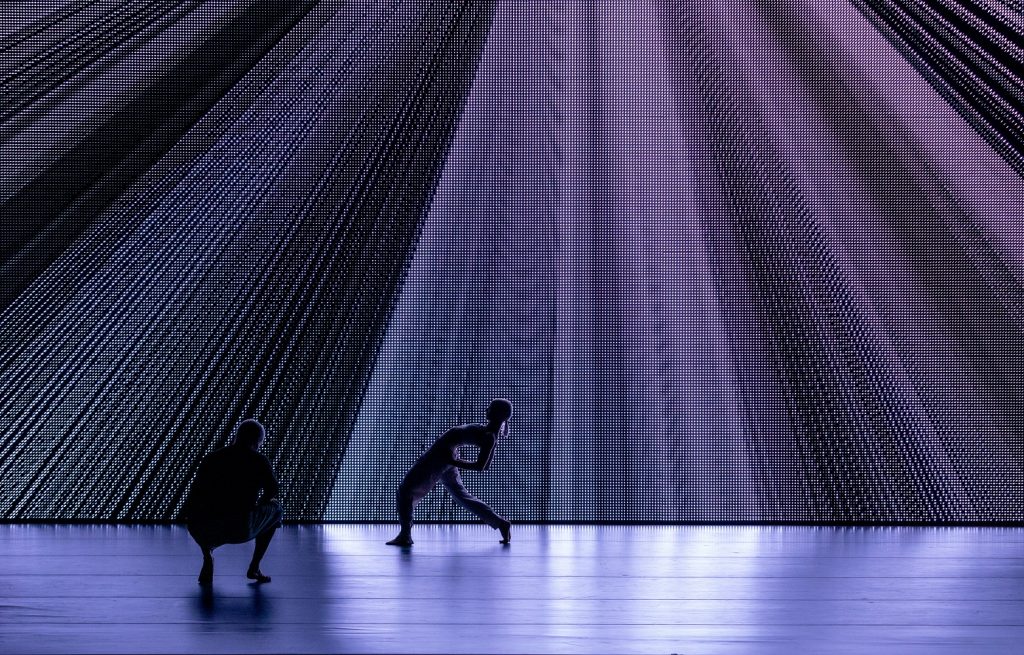
“Living Archive: An AI Performance Experiment” by Wayne McGregor – Rebecca Bassett-Graham and Izzac Carroll – Photo by Cheryl Mann
The music did have moments of quiet and contemplative melodies to match the occasional changes to softer images on the screen. And again, the choreography took its cues from these, as do the dancers. There was an improvisational feel to much of what happened here as opposed to “Outlier” which felt more rehearsed. The piece moves along in its mechanical style until the cacophonous final moments. Musically the orchestra broke loose with every instrument thrown into the mix including much tympani, piano, violins, harps and a glockenspiel because, why not. The dancers worked tirelessly but the choreography did not hit the mark and missed important crescendos and accents. All in all, it seemed that “AI” while able to help create dance movement cannot compete with the imagination of a gifted human brain.
The most anticipated event of the evening was presented as the third and final work of the night. This would be “The Dante Project Part 1” (Inferno) a dance world premiere. This was one act of what will be a three-act ballet representing Dante’s triptych “Inferno,” “Purgatorio” and “Paradiso.” The full ballet is set to premier next year in London. All the dancers featured in this presentation are members of The Royal Ballet.
Noted visual artist Tacita Dean made her stage set and costume design debut with The Dante Project. Based on her chalk drawings the curtain rises to reveal impenetrable mountains that seemed to loom in the distance while an ominous hole in the sky gave the illusion that the world had cracked open and we the audience had fallen into the abyss. All was dark and despairing.
Dressed in blue was principle dancer Edward Watson as Dante and his guide the Roman poet Virgil. Virgil costumed in gold was danced by Gary Avis a leading character artist.
We found Dante in this crater of Hell working hard to let the audience know of his misery but with his awkward movement, strange posture and unclear choreography it was hard to decipher anything more than distress. Virgil appeared and though the choreography did not make it clear, we knew that he would be guiding him through the gauntlet.
Dante’s first encounter was with a group of what might be called spritely demons dressed in blackish unitards dancing with no particular intent. Of course, we knew they should be trying to lure him into their world but there was nothing alluring about the choreography. For the most part Dante and Virgil stand by and observe. Into this mix came a seductive couple. We knew this because their basic blackish unitards had large white areas around the crotch and buttocks. As if we might not “get it” otherwise. This did not look seductive but foolish. Their pas de duex was meant to embody the unquenchable flame but there was no heat here. What was meant to be sexy was clumsy and awkward leaving the dancers to do the best they can with too little. In today’s world where eroticism in dance is easily accessible this seemed like an elementary mistake.
So goes the ballet until a swamp like creature magnificently danced by Calvin Richardson lit up the stage. Tall, sinewy and masculine he took complete possession of his creepy character. Here the choreography worked well and Richardson made the most of it. Joined by the demons all focus was still on the slithering animal that was Richardson. Swaggering, teasing and precise he was the highlight of the night.
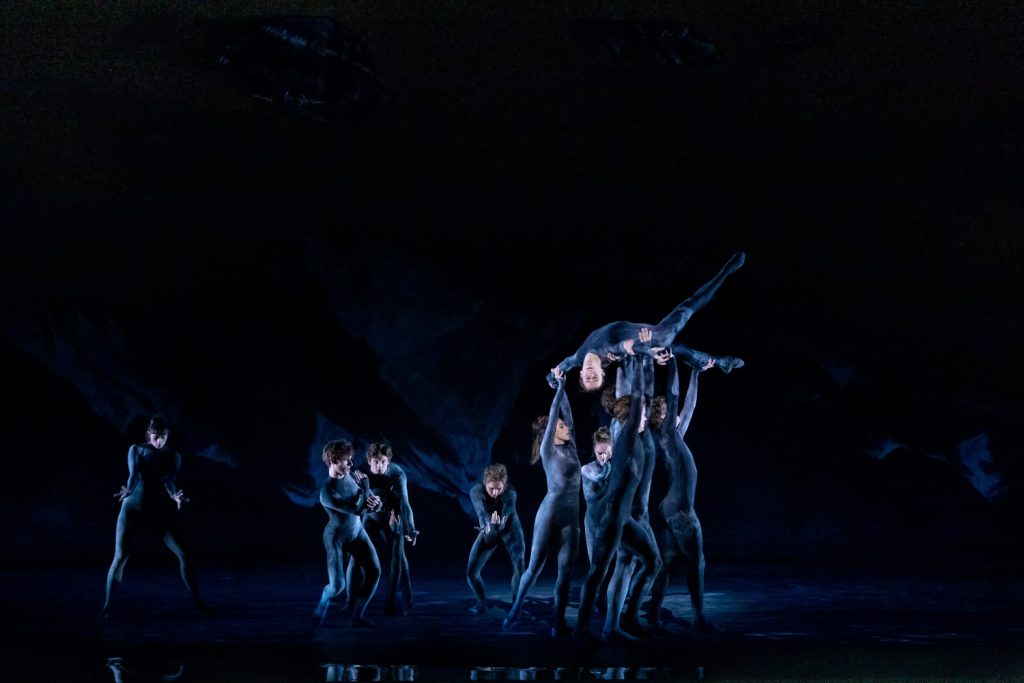
“The Dante Project Part 1” (Inferno) by Wayne McGregor – Artists of The Royal Ballet – Photo by Cheryl Mann
With all the dancing yet to follow we were never pulled into this tempting underworld, as Dante and Virgil seemed to illuminate by watching impassively.
Often the stage was filled with nimble sprites as though we were in a different story. A particularly curious turn came when two male soloists played a game of whimsy, like a balletic version of Tweedle Dum and Tweedle Dee. Well danced though it was it seemed to be in the wrong story. Good ideas abound here only to die away unfinished with the dancers simply exiting without reason.
As the ending neared the music swung into full circus mode as male dancers rushed the stage. Turning, leaping, falling and crawling they danced with remarkable technique and energy. Though it had moments of exhilaration it missed the full knock out it could have been. Without clear direction it began to fall apart and look under rehearsed. Again, Dante and Virgil seemed to be merely observers.
The set changed to white and next we found Dante in an adagio with the Ice Queen. Perhaps we had come to another level of Hell? Watson seemed uncomfortable dancing with Fumi Kaneko in this role. Nothing much happened when finally, Dante left her side to return to the dungeon and lifted his face to a shaft of light. The promise of better things to come, one could only hope.
Unlike the first two works of the evening this was a story ballet and therein lay the problem. McGregor did not have the necessary vision to make his story clear. Composer Thomas Adés on the other hand could write for a story Ballet and with clear direction his work would soar.
With what I could assume was a more than adequate budget the costumes were utilitarian at best as was the lighting. All and all it was a night of great dancers working to less than great choreography. However, the audience seemed to be happy with the result as they gave them a standing ovation.
Written by Tam Warner for LA Dance Chronicle, July 15, 2019
For more information on Company Wayne McGregor, click here.
To learn more about the Glorya Kaufman Presents Dance at The Music Center, click here.
Featured image: “Living Archive: An AI Performance Experiment” by Wayne McGregor – Rebecca Bassett-Graham and Maria Daniela Gonzalez – Photo by Cheryl Mann

